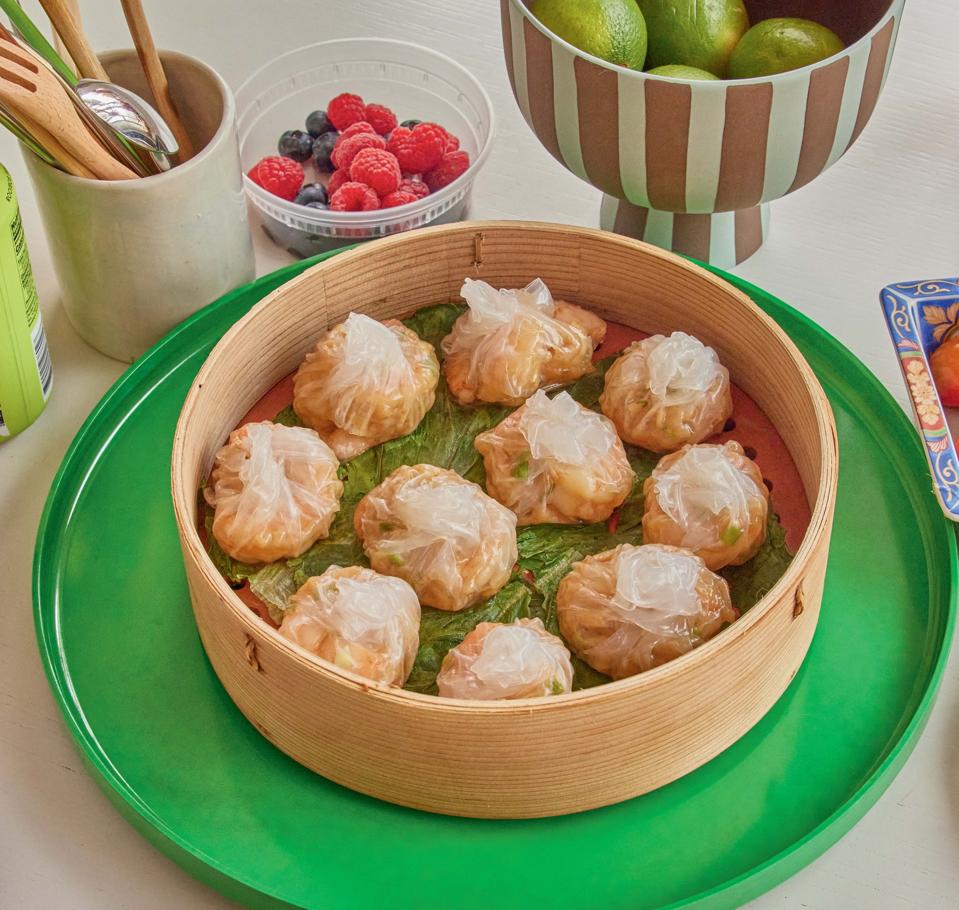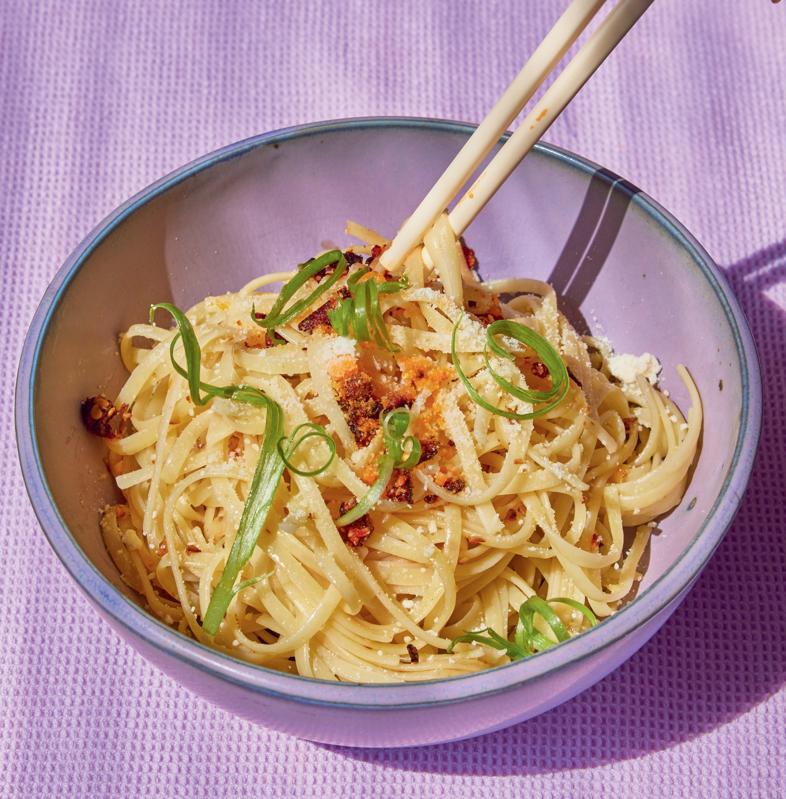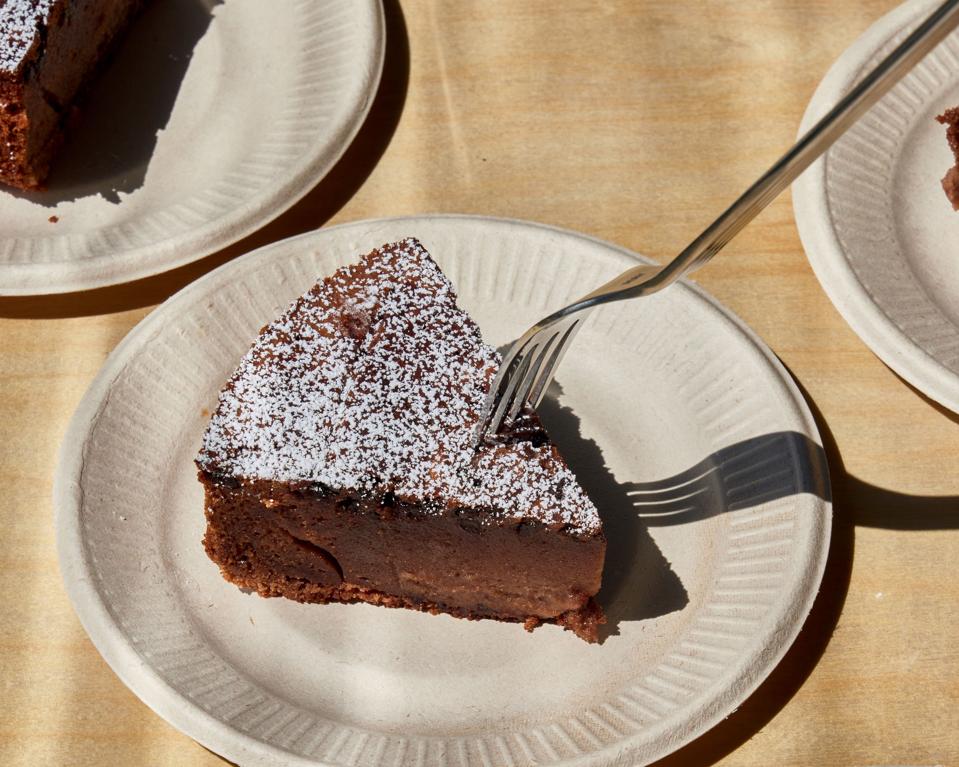Kat Lieu, founder of Subtle Asian Baking and bestselling author of Modern Asian Baking at Home, has just released her newest cookbook, Modern Asian Kitchen: Essential and Easy Recipes for Ramen, Dumplings, Dim Sum, Stir-Fries, Rice Bowls, Pho, Bibimbaps, and More.
The book features different genres of Asian cuisine, with more than 80 recipes for street-food staples, dim sum, quick noodle dishes, customizable bibimbap bowls, and Southeast Asian favorites. It is the perfect guide for crafting a family-style feast or a simple one-bowl meal at the end of a busy workday. It includes a glossary of ingredients and pantry basics, with usefeul techniques for wrapping wontons, making dumplings and quick blanching greens. There are also plenty of vegan, vegetarian, and gluten free recipes.
Lieu created Subtle Asian Baking in May 2020 during the pandemic, when she missed her mother’s desserts and baked treats. The goal was to connect with other dessert and pastry enthusiasts to exchange recipes that use Asian ingredients or baking methods. Turns out, there are a lot of people interested in such things. Today, the group boasts close to 160,000 members worldwide across social media platforms, and is also a fundraising vehicle supporting various Asian American causes.
Kat Lieu, founder of the Subtle Asian Baking group and cookbook author.
“My group Subtle Asian Baking (SAB) was born on May 24th, 2020, so this AA and NHPI Heritage Month marks SAB’s fourth birthday. Since 2020, my group and I have raised over $101,000 for different organizations and charities. We activate through online fundraisers and bake sales across the globe from Singapore to Toronto, to Seattle and New York City.”
Lieu is a busy mom who works from home and is a self-taught cook and baker. “I’ve never been to culinary school and I don’t have a certificate from Le Cordon Bleu. I just know how to cook and bake delicious food for the people I love. My grandparents were Vietnamese and Chinese, and my maternal grandmother loved to cook and bake,” says Lieu.
“Every summer during my childhood I lived with them in Montreal, Canada, right in the heart of Chinatown. They introduced me to flavors like matcha, Indian curries, Thai chilis, fish sauce, and various Vietnamese dishes from a very early age. They also took me to many dim sum restaurants and Asian-inspired buffets starting when I was about five years old. My grandmother taught me how to season food, beat eggs, and make delicious sauces.”
Rice Paper Har Gow (shrimp dumplings) is one of the recipes featured in Modern Asian Kitchen.
Back at home in Brooklyn, Lieu’s mother prepared traditional Cantonese dishes like fried rice, tomatoes and eggs, and whole steamed fish, while her father preferred American and Italian-American foods such as hamburgers, pizzas, and chicken parmigiana. “Growing up I would say I ate a little of everything and cooked a little of everything. It was crucial that I wasn’t a picky eater and I always tried new foods,” says Lieu.
“I love Western food as much as I love Asian food. I love fusion food! I trained my palate early on, and these days I have great taste buds and a good insight into flavor pairings, making it easy to develop delicious and new recipes. That’s why these days I add miso, soy sauce, fish sauce, or MSG to my cookies and sugar to my cheesy chive biscuits. Fermented tofu or furu goes into a buttery sauce with honey, which I slather over the cheesy chive biscuits. I also make ube pão de queijo and pandan tres leches cake, as featured in Modern Asian Kitchen.”
In the cookbook, she credits the people that inspired her to develop these exciting recipes, “but they’re not the names of celebrities and influencers,” she says. “They’re the names of a SAB member’s mother or grandmother, people who may never have felt or been represented in food media — or any media. I’ve adapted their recipes to feature in my cookbook along with their untold stories.”
Melty Cheesecake Baos are a perfect example of Lieu’s love for blending Asian and Western cuisines.
This year, on May 18th, during the heart of AA and NHPI Heritage Month, an Asian-owned brewery in Seattle named Lucky Envelope Brewing is launching a Gochujang Chocolate cream stout inspired by the gochujang chocolate mochi cake recipe in Lieu’s latest cookbook.
“This feels like a full circle moment for me as it reminds me of the importance of community and collaboration,” she says. “Lucky Envelope Brewing consistently donates proceeds to AA and NHPI causes such as The Very Asian Foundation, of which I am a board member. I believe that giving back is incredibly important, and it is during AA and NHPI month that I feel my voice and impact are most amplified.”
Lieu recently collaborated with World Spice in Seattle to develop a chili crisp mix, with 10 percent of the proceeds being donated to Asian Counseling and Referral Service (ACRS) in Seattle. This was in response to the debate around Momofuku’s controversial attempt to copyright the term “chili crunch.”
Chili Crisp Butter Garlic Pasta is a quick and easy recipe for a weeknight dinner.
“Overnight I launched a chili crisp mix with World Spice in Seattle to show how easy it is for anyone to make and market chili crisp, and how inappropriate it is to try to trademark a sauce or terms like “chili crisp” or “chili crunch”. It’s like how Third Culture Bakery tried to trademark “mochi muffin” and received a lot of backlash after sending cease and desist letters to other bakeries and even online bloggers for writing “mochi muffin” recipes,” says Lieu.
These days, Lieu is inspired to make recipes that keep everyone in her family happy.
“My mother is getting older now, so I have to remember to make her softer foods like Cantonese congee or roasted Japanese sweet potatoes,” she says. “My son loves Japanese food, so I’ve invested in a good knife to cut sashimi for him. My husband loves anything with rice, so I’ve learned to make a lot of Filipino dishes to remind him of home.”
“Growing up as a third culture kid I never heard my grandparents tell me they loved me in Vietnamese or Cantonese. It was rare for my parents to say it too, but my dad did write it in a lot in cards in English. The adults always relied on food to get their message of love across, and their food always made me feel warm, loved, and comforted. I guess this is why we often say across AA and NHPI communities, food is the predominant love language.”
Kat Lie’s Gochujang Chocolate Mochi Cake
Gochujang Chocolate Mochi Cake
“Chocolate lovers, this is the cake for you. It’s not too sweet, has a fun chew, and will undoubtedly be a stunner at any potluck. If you love to spice things up, drop a heaping tablespoon of gochujang into the batter. Then decorate the cake however way you’d like, because you can’t really go wrong with a beautiful chocolate canvas like this. Enjoy the cake hot, right out of the oven, or give it a day for the mochi to cure. The cake will be chewier then.”
· 2 large eggs (about 3.5 ounces or 100 g)
· 1 cup (200 g) granulated sugar
· 1/4 cup (59 ml) sweetened condensed milk
· 1 teaspoon miso or 1/4 teaspoon kosher salt
· Up to 1 heaping tablespoon (17 g) gochujang, adjust to taste
· 1 cup (235 ml) milk
· 2 tablespoons (28 g) unsalted butter, melted
· 1 teaspoon baking powder
· About 17/8 cups (296 g) glutinous rice flour
· 1 tablespoon (8 g) cornstarch
· 2 tablespoons (14 g) Dutch processed cocoa powder, sifted
· 1/3 cup (60 g) finely chopped or flaked semi-sweet chocolate
FOR THE OPTIONAL TOPPINGS:
· Confectioners’ sugar
· Cocoa powder
· Paprika
· Sliced strawberries
· Sweetened condensed milk
· Edible gold flakes
PREP TIME 15 MINUTES COOK TIME 50 MINUTES
YIELD ONE 8-INCH (20-CM) CAKE
1. Preheat the oven to 350°F (180°C) with a rack in the center. Generously grease with cooking spray or line an 8-inch (20-cm) round cake pan with parchment paper (including the rim).
2. In a large bowl or a stand mixer fitted with the paddle attachment, whisk together the eggs, sugar, condensed milk, miso (or salt), and gochujang. Once the mixture is fluffy, whisk in the milk and melted butter until combined. Sift in the dry ingredients: baking powder, glutinous rice flour, cornstarch, and cocoa powder. Mix until well combined.
3. Pour the mochi batter into the prepared pan. Spread on the chocolate chips or chopped chocolate, evenly distributing them around the top of the cake. Bake until an inserted toothpick or bamboo skewer comes out clean and the top is semi-cracked, with brownielike crust, about 50 minutes.
4. Remove from the oven and let the cake cool in the pan itself or take it out to cool on a wire rack. If you prefer cakes sweeter, drizzle with a liquid sweetener of choice. Decorating with sliced fruits, like strawberries, gives the cake a beautiful pop of color, and if you love edible gold flakes like I do, add them! Dust with confectioners’ sugar and/or cocoa powder, if desired, slice, and serve.
5. Store leftover cake in an airtight container. It should still be good and chewy the next day.
NOTE: If you prefer a nonspicy chocolate cake, simply leave out the gochujang. Please note that most gochujang isn’t gluten-free, so therefore including it makes this cake not gluten-free.
MAKE IT VEGAN: Substitute the eggs with 3.5 ounces (100 g) silken tofu, the condensed milk with vegan condensed milk (available at health food stores or online) or agave syrup, the milk with water or plain plantbased milk, the butter with vegan butter or neutral oil, and use vegan-friendly chocolate chips.
Recipe adapted from Modern Asian Kitchen, by Kat Lieu, copyright 2024. Published by Harvard Common Press, an imprint of The Quarto Group.





